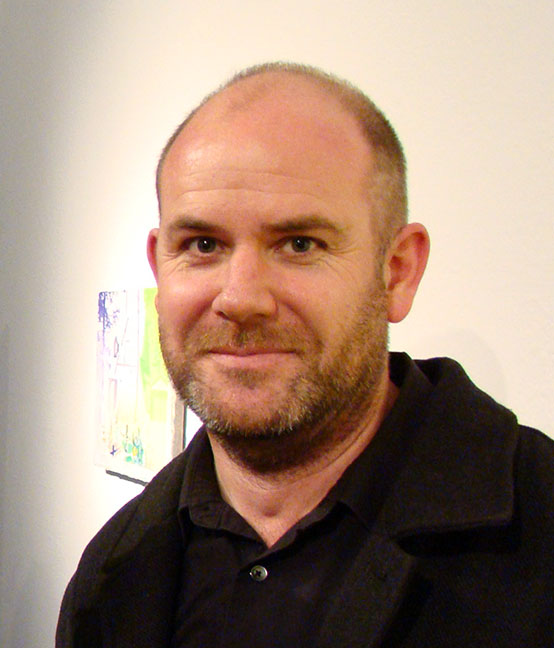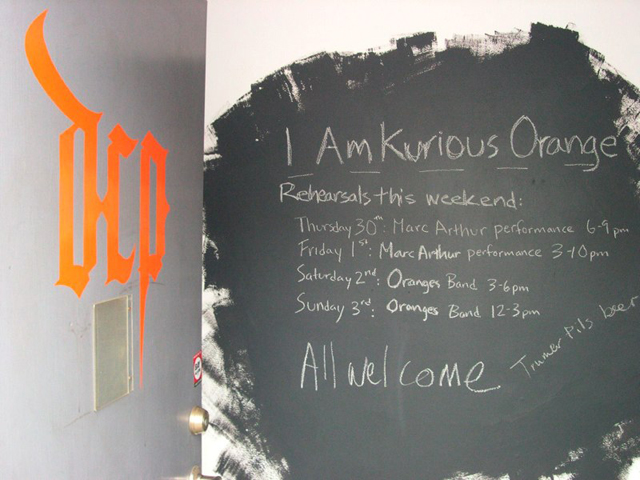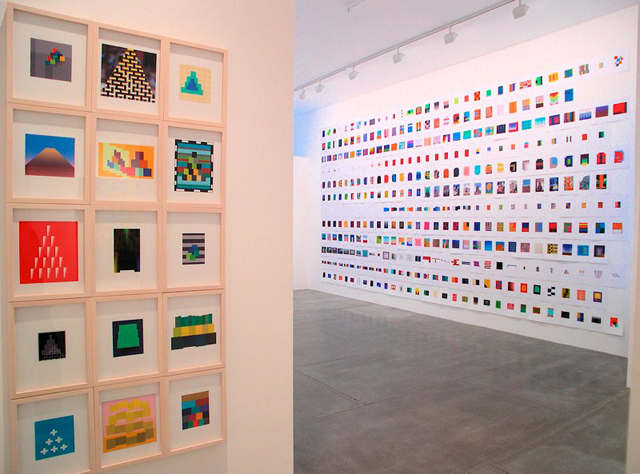News of the death of San Francisco-based architect and arts patron David Cunningham spread swiftly on Facebook this week, to the disbelief of many who knew the former owner of David Cunningham Projects (DCP), an alternative gallery on Folsom Street. The stalwart arts supporter and former Southern Exposure board member died from cancer on Sunday; he was 48. Modern Edinburgh Film School posted a tribute to him on Facebook, espousing the “energy, intellect and special presence of David Cunningham and his fantastic gallery.”

He did indeed have a special presence: very quiet, extremely generous and deeply committed to artists and the importance of art. His architecture projects will stand as testament to his contributions to public life. The many artists, designers and architects he worked with will continue to feel his influence as an arts champion, here and abroad.
I first met Cunningham in 2008 through artist Michael Damm. My curatorial enterprise Invisible Venue produced a site-specific series of Damm’s video projections in West Oakland in association with DCP, which was simultaneously projecting Damm’s videos onto the street in San Francisco. Over the years, Cunningham would drop me a supportive note from time to time, whenever my writing generated a lot of commentary and/or controversy, as the case sometimes has been.
Last year, as board vice president, he invited me to speak with the Southern Exposure staff and board about the shifting landscape of support for artists in the San Francisco Bay Area. Like many others, I will miss his quiet advocacy and gentle humor.
Born in Zambia to Irish parents, he spent much of his early childhood in Africa before returning to Ireland. Cunningham studied architecture at University College of Dublin. He moved to San Francisco in 1993 and worked at the firm Studios Architecture before joining Oculus Architects in 1998. His early projects include the extraordinary Petronas Towers in Kuala Lumpur. More recently his clients include University of California, San Francisco; University of San Francisco, and St. Mary’s College, where he was the lead architect and project designer on the $23.5 million Joseph Alioto Recreation Center, completed earlier this year. His longtime friend and colleague, Hugh Cotter, a principal at Oculus Architects, said recently, “He never introduced the precious or pastiche, but just saw, with an artist’s eye, what others might miss.”

Cunningham established DCP out of his architecture studio in 2007, presenting a wide range of challenging, provocative and ambitious projects until 2010. There he showed international artists including Austin McQuinn, Bernadette Cotter, Pawel Kruk and Richard T. Walker, and many others. Artist Anne Colvin organized I am Kurious Orange at DCP in 2009; author Kevin Killian described the show as “a theatrical extravaganza” on SFMOMA’s Open Space.
Colvin notes Cunningham’s extraordinary generosity. He directly supported artists out-of-pocket and funded the production of challenging work, simply because he believed in it. “His interests,” Colvin says, “weren’t dictated by trends, but guided very much by his own passions.”
This is evident not only in the scope of the work that he presented, but in the scope of community he created. Case in point: A DCP 2008 exhibition featured the work Marshall Elementary School students, grades K – 5, focused on their visions for a better world.

Echoing Colvin’s stories of his commitment, Walker, who worked for the gallery from the second show until it closed, recalled when Cunningham hired a structural engineer to reinforce the gallery floors in order to present Mariele Neudecker’s Tanks. “The gallery,” Walker says, “became a place where something was genuinely happening; things were unpredictable in the best possible way and although David was at the center of it all he would never accept any credit, as for him it was always about the artists.”
After DCP closed, following an untenable rent increase that seemed to initiate an avalanche of change in the city, Southern Exposure’s then-executive director Courtney Fink invited Cunningham to jury the annual Alternative Exposure grant awards. Shortly thereafter he joined the board and became, in her words, “indispensible from the moment he arrived.” Cunningham also continued to organize shows, including the 2011 group exhibition Enter Slowly featuring seven international artists at The Lab, among other independent projects.
Cunningham possessed a unique vision for the possibilities in a city where rising costs have increasingly narrowed the field for risk and experimentation, and a genuine spirit that will be forever associated with a particularly vital and necessary moment in the San Francisco art scene. For any of us lucky enough to have experienced both, he will be deeply missed.
David Cunningham is survived by his parents Steve and Margôt Cunningham of Galway, Ireland, his siblings and their extended families, as well as a vast international network of friends from the Bay Area and beyond. He will be laid to rest in a private ceremony this week in Ireland. A celebration of his life and contributions will take place later this fall at Southern Exposure. In lieu of flowers, his family has requested donations in his memory to Galway Hospice.